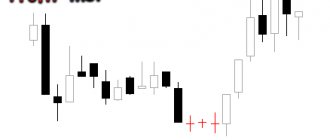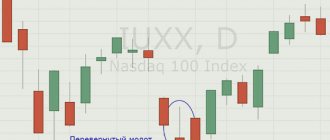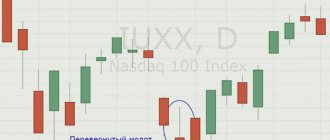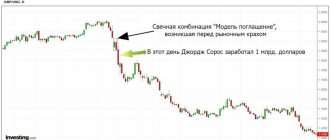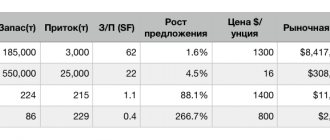With the advent and development of a market economy, most countries of the world came to the conclusion that none of the then existing economic systems fully met the requirements. Therefore, a new system was needed that could significantly change the state of affairs and give new impetus to the development of the economies of individual countries. A mixed economy, which combines the features of two other economic systems, copes with this task more successfully, which emphasizes the relevance of its research. Each state using a mixed economic system develops purely individually, choosing which features of other economic systems to use.
Theoretical aspects of a mixed economic system.
In today's realities, there are no examples of a pure command or pure market economy, completely free from the state. Most countries are trying to organically and flexibly combine market efficiency with government regulation of the economy. This combination forms a mixed economy.
What are the economic models?
The economies of the world operate under different models. There are quite a lot of criteria that determine the properties of each of them. In the modern scientific community, two are popular - the preferential form of ownership of resources that underlie economic development, and mechanisms for coordinating economic entities. Based on these two criteria, several groups of economic models are distinguished. Let's list them.
1. Command economy models
They are characterized by the predominance of state forms of ownership of economic resources. The activities of economic entities are based on administrative and command directives issued by authorities. The key mechanisms that determine what to produce, how to distribute and through what channels to exchange are formed by the state. The USSR economy was considered to be a command economy. Among the existing countries, North Korea has such a model, according to some experts.
2. Market economy models
They are characterized by the fact that resources are mostly private property and there is freedom to set prices. The state does not influence key economic processes and does not actively participate in the distribution of any resources.
3. Mixed economy models
Researchers note that market or team models in their pure form are quite rare today. One way or another, the state interferes in business affairs in almost any country that actively promotes free market values. In turn, even in North Korea there is a place for, albeit illegal, but still having signs of private business.
Mixed economy models today, according to experts, are the most widespread in the world. The only question is how large and what characterizes the role of the state in the economic system of a single country. In addition, in some cases, it is not so much the degree of government intervention in business affairs that is of great importance, but rather the political regime.
Conclusion
Despite the fact that the above-mentioned models of a mixed type of national economy have a lot of similar features, there are significant differences between them in many aspects.
This is the characteristic of a mixed economy. The modern hybrid system is the most advanced form of organizing the work of the national economy that has ever existed. Its main advantage is the successful synergy of the advantages of different systems. An important feature is incredible flexibility , which is expressed in the ability for immediate transformations dictated by changes in the external and domestic markets. We have given a clear explanation of what a mixed economy is and what features it has.
What is a mixed economy
Before studying mixed economy models in different countries, let us study the general characteristics of this kind of economic systems. The main criterion here is that the roles of the state and the private sector are equally important. In addition, both forms of ownership are present in comparable proportions. However, the main economic mechanisms are still determined by the market. The state supplements them by introducing changes to the regulatory legislation.
What is the rationale for government intervention in market affairs? Why not let your business float freely? Some economists explain this by saying that with a pure market there is a risk that a significant part of citizens will remain socially unprotected and will not be able to find work. Moreover, this is not beneficial for private businesses, many of which need solvent clients. It will be better if someone provides them with income (let it be state-owned enterprises), and the sales market will expand. There is a version that the Russian model of a mixed economy works in a similar way. In it, the state, by providing work to millions of citizens in the public sector, which has little in common with entrepreneurship and the free market, stimulates their purchasing power, due to which, in turn, “pure” businesses operate, such as, for example, retail trade, fast food , automobile retail.
Another point of view regarding the role of the state in a mixed economy is based on the issue of free pricing. The fact is that the market in its pure form is very speculative. Many of its players are not able to agree on a moderate policy in terms of increasing selling prices, and if they show such initiatives, then, as a rule, with the aim of colluding against competitors, as a result of which inflation accelerates (as was the case, for example, in Russia in the early 90s -x, and in many other countries of the former socialist bloc). As a result, the economy is plunged into crisis. The state, through reasonable intervention in market affairs, can regulate the course of pricing, which can help slow down inflation.
Basic concept
A mixed economy is a system in which private producers and state-owned enterprises work in tandem in the economy. In a mixed system, individuals, businesses and corporations are allowed to pursue their best interests in the market, while government or public programs, organizations and businesses are equally allowed to provide services, etc. in the market, as well as intervene in areas such as trade or taxes.
However, a mixed system is not the same as a restricted economy because the government competes for limited resources in the market and can control and sanction corporations or private sector businesses. In addition, this system does monitor profit levels and may interfere with resource allocation.
According to neoclassical theory, it is less efficient than purely free markets. But proponents of government intervention argue that the basic conditions necessary for efficiency in free markets (equal information and rational market participants) cannot be achieved in practice.
Most modern economies have a synthesis of two or more economic systems. The public sector works alongside the private sector, but may compete for the same limited resources. Mixed economic systems do not block the private sector from making profits, but they regulate business and can nationalize industries that provide public goods.
For example, Russia's economy is a mixed economy in that it leaves ownership of the means of production largely in private hands, but includes such elements as subsidies for agriculture, regulation of production, and partial or full government ownership of some industries such as letter delivery and national defense.
Virtually all known historical and modern economies lie somewhere on the continuum of mixed systems. Both pure socialism and pure free market are only theoretical models.
Basic concepts of a mixed economy
Let's consider what the main models of mixed economies are, based on their fundamental nature. Experts highlight the following.
1. Neostatist model
Its main feature is the nationalization of key industries, as well as the influence on the market so that the capabilities of individual players are approximately equal. In some cases, antimonopoly mechanisms are included in economic policy.
2. Neoliberal model
Characterized by less government intervention in market affairs than in the neo-statist scenario. The authorities try to influence the quality of functioning of economic institutions, but not the competitive process itself. At the same time, the antimonopoly component can also be involved in order to protect free competition.
3. Model of coordinated action
It is based on the principle of finding a compromise between various subjects of the economic process - businesses, government, society (often represented by trade unions). It is characterized by fairly high taxes (usually higher than in countries where the neoliberal model is practiced), often calculated on a progressive scale. The ultimate goal of the authorities is to acquire resources to maintain the equality of the social status of citizens.
These are the most common mixed economy models. Of course, as economic processes naturally progress, priorities in certain states may change. National models of mixed economies, according to experts, tend to evolve, adapting to socio-political reality, external conditions, technology development, and the emergence of new markets.
Centralized economic system
Despite the large number of positive qualities of a market economy, the spontaneity of the market and uneven economic development led to the emergence of crises in the economic and social sphere. A series of crises led to the emergence of a centralized economic system, which was reflected in the socialist system.
According to the theory of socialism, it was necessary for the state to monopolize the management of the economic system, production and distribution of goods. Those. there was a dominance of state ownership. The characteristics of this system were predictability, consistency and a high degree of social protection of the population. Under socialism, it was possible to concentrate all types of resources in certain areas of production in a short period of time. The disadvantage of a centralized system is the unreasonable growth of the management apparatus, which makes the economy slow and difficult, in other words, clumsy. Because of this, she could not react in time to changes in the market situation. Therefore, there were shortages, a decrease in the quality of goods, a deterioration in the state of the domestic market, a decline in labor productivity and the competitiveness of products.
Examples of the use of a centralized economic system were the USSR until 1991, and today these are the Republic of Cuba and the Democratic People's Republic of Korea.
Did not you find what you were looking for?
Just write and we will help
Features of the functioning of a mixed economy
How do mixed economy mechanisms work in practice? How is the work of the economic systems of the countries where they are used organized? Experts, taking into account the fact that national models of mixed economies in different countries may have their own characteristics, suggest that there may still be some commonality of characteristics for economic systems of this type. The following mechanisms are considered the most universal for mixed economies of different countries.
1. The bulk of industrial products are produced by large corporations, which, however, compete with each other. Thus, economic processes, on the one hand, are not dispersed, on the other hand, there is no monopoly, there is no market player who would form the rules for everyone. The form of ownership of such enterprises is not of fundamental importance - even if it is not state-owned, then businesses are one way or another responsible to the authorities due to obligations to pay taxes or contributions to pension accounts.
2. Legislation is largely socially oriented. For example, a factory worker, as a rule, cannot simply be fired or his salary reduced in comparison with what is specified in the contract. Thus, the law stimulates the maintenance of the purchasing power of citizens.
3. High standardization and security of payment procedures, as well as those that ensure the protection of contracts (as a rule, this is a developed judicial system). In this case, the state assumes part of the obligations to ensure the stable operation of the business, demanding, in particular, from banks the strictest correctness in the implementation of settlement procedures. The judicial branch of government, in turn, guarantees assistance to entrepreneurs in resolving difficulties in the legal field. The state and business sign a kind of social contract: the first party provides security in a number of key mechanisms for entrepreneurs, while the second “pays” for this through taxes and hiring citizens.
It is these three characteristics that, according to experts, characterize all the main models of a mixed economy, despite all the possible differences between them in terms of sovereign mechanisms for implementing national economic policy.
How did the mixed economy come about?
An interesting fact is that, according to many experts, the “progressive” market model appeared earlier than the mixed one. It so happened that by the beginning of the twentieth century, the “pure market” in the form of capitalism without significant government intervention turned out to be not as effective as the subjects of economic relations expected. The market began to be regulated by the authorities. At the same time, attempts to deviate from this model and return to the “pure market” became, as many experts believe, the cause of the crisis in the United States in the early 30s. Economists have realized that the optimal functioning of the economy must still imply a significant role for the state. Thus, a mixed model of national economic construction appeared in the 30s and 40s. During the war years, the priorities of states were somewhat different due to the need to provide resource support to armies, but after the end of World War II, Western countries began to introduce the principles of a mixed economy especially actively. Today's economic models in these states are the result of the progressive introduction of principles that ensure a compromise between private and public capital.
Mixed economy in the USA
How do mixed economy models operate in different countries? Let us briefly consider the relevant features using the example of the most powerful economic powers. Let's start with the USA. The American model of a mixed economy, as many experts believe, is characterized by minimal government intervention in economic processes. The corresponding type of property plays a relatively small role in comparison with private property. The leading role in the US economy is played by non-state capital, but its direction is regulated by government structures - through the issuance of laws related to reporting, social obligations, payment of taxes and other fees. The role of the authorities in the US economy can be noticeable in the segment of government contracts, mainly of a defense and scientific nature. As you know, the US military budget is more than $500 billion.
Many economists believe that the American mixed economy model is aimed at stimulating civic entrepreneurial activity. In practice, this can be expressed in a minimum number of formalities when opening a business. Also, social support measures for low-income groups of Americans are not as large-scale as in many other Western countries. Unemployment benefits and benefits can provide only minimal needs at the prices that exist in the United States. Therefore, citizens strive to find work or organize their own business.
Mixed economy model in Germany
What characterizes the German mixed economy model? Experts call its main characteristic its pronounced social orientation. And this distinguishes Germans from Americans. The same benefits in Germany provide a normal standard of living. The German authorities are trying to regulate the economy so that there is a compromise between the priorities of business and society. On the one hand, enterprises must be efficient, contribute to GDP growth and the development of the economy as a whole. On the other hand, social justice must be ensured.
The German mixed economy model has the following characteristic features.
Firstly, it is a fair competitive environment. Each subject of the economic process, based on the policy of the German authorities, should have equal opportunities to realize their entrepreneurial potential.
Secondly, the German mixed economy model implies a fair distribution of income. This can be expressed both in stimulating businesses to build balanced wage scales in terms of calculating salaries by position, and, for example, in the direct participation of the state in equalizing the social status of citizens whose work is paid unequally. In particular, through the provision of housing benefits, support in insurance, and education.
Goals and objectives of a mixed economic system
The main goal of creating a mixed economic system is to preserve and maintain political and economic stability. Due to the participation of the state, various contradictions of a social nature are smoothed out and the public sphere is maintained. But components taken from a market economic system are still subject to economic fluctuations. Therefore, it is natural for a mixed economy to experience periods of economic boom and bust.
Objectives of a mixed economic system:
- Providing the maximum percentage of the population with work;
- Continuous improvement of the material well-being of society;
- Making prices stable in the domestic market;
- Continuous increase in productivity and wages;
- Striving for maximum utilization of all production capacities.
Japanese model
The Japanese mixed economy model is very specific. First of all, it is worth noting that it has strong national traditions, the influence of which can be traced in many areas of the economic process. This is the specificity of the relationship between management and subordinates, and the continuing institution of heredity in the aspect of profession and the choice of the enterprise at which to work. Another feature that characterizes the Japanese model of a mixed economy is significantly more pronounced government intervention in economic processes than, say, in the United States. This is most strongly expressed in determining the key vectors for the development of the national economy and the principles of interaction with foreign players. Social justice also plays an important role in the Japanese economy.
Swedish concept
Let's look at what characterizes the Swedish model of a mixed economy. According to experts, Sweden has built a society that is close in characteristics to typical socialist ideals. Measures of financial and material support are guaranteed to almost all categories of citizens, regardless of the presence or absence of work, length of service, or profession. There is even a term “Scandinavian socialism”. Of course, within the framework of the functioning of such an economic model, a large tax burden is placed on business.
In return, at the same time, he receives clients with guaranteed high purchasing power, as well as security in terms of bank payments and fair courts, what we talked about above, listing the aspects of “social partnership” between the state and business. At the same time, there is an opinion among economists that the Swedish model of a mixed economy has too much of a “socialist” bias. Many businesses find it difficult to operate under the harsh tax burden.
Chinese model
Let's look at how the market economic system of a communist country functions. How is this possible given that in the USSR everything was under state control? How does the Chinese mixed economy model work?
The thing is that, starting in the 70s, the Communist Party of the People's Republic of China decided to open the national economy to external investors in order to use the country's huge production potential. Laws regarding the opening of branches of foreign corporations were liberalized. But the political system remained unchanged. Foreigners were attracted by the cheapness of human resources in the PRC, and they willingly invested in the economy of a communist state that decided to open itself to the market. As a result, today China is one of the leading industrial powers. At the same time, due to the fact that the political regime has not changed, the PRC authorities have the opportunity, using command and administrative methods, to use this resource as they see fit. For example, use it to improve the standard of living of citizens and their social security. Which now, as many experts admit, is not at a very high level.
It is also worth noting that the institution of small entrepreneurship is well developed in China. Many Chinese open small but profitable retail outlets, restaurants, and transport companies. It turns out that under communism in the PRC there is a very developed capitalism.
Market economic system
The basis of the market model was private property, and production management was carried out through market mechanisms. Managers were motivated by profit and personal gain. At first, the market economy was not regulated by the state; economic management was carried out by private owners. A distinctive feature of a market economic system is that any person has the opportunity to become an entrepreneur and make a profit as a result of his activities. An entrepreneur should research the needs of the population, since demand creates supply. Competition helps set the price; payment is made on a contractual basis. Competition is a certain form of rivalry among market participants for the best conditions for the production and purchase and sale of goods and services.
The main feature of a market economy is that the state does not interfere in setting prices for goods, but monitors the actions of economic entities. Owners can use the income they receive freely, but they must pay tax.
